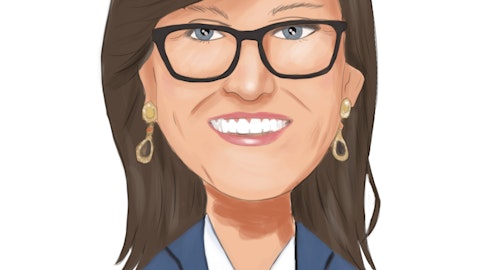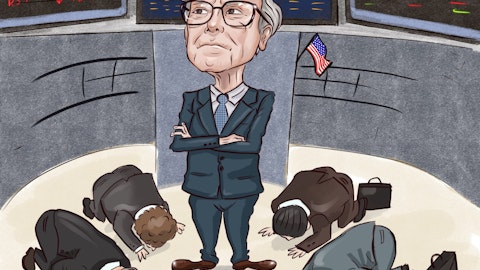Thiago Piau: Great, Mario. I think that we evolved a lot both in financial platform and software. And I think that we will continue to execute on our growth plans but with more discipline. And I think that the capabilities in terms of leadership, management, we move over a lot, and Pedro will be a very big contribution on that front. I think that in terms of strategy, once Pedro is here, 100% on board. I think that you will be able to listen from him. But I think that the company is well set in terms of the results we are delivering and the direction we are heading, but always evolving. So I think that we will continue to evolve. Once we have our investor, they will be able to give more color about what we are planning for the next five years. We are just finalizing our five-year plan revision now. So I’m very excited with the business. And I think that we will be happy to listen more about this from Pedro in the next coming months when he is here 100% on board.
Mario Pierry: Okay, now that’s perfect. Thank you very much and good luck with your new role at the board. Thank you.
Thiago Piau: Thank you very much, Mario. Thank you very much.
Operator: And our next question will come from James Friedman with Susquehanna. Please go ahead.
James Friedman: Hi, Thiago, let me congratulate you. It’s been a great four years, and we appreciate your leadership and accomplishments. So I had two questions. First for Lia and then for Rafa. So Lia, did you €“ I heard you say the call-outs about Pagar.me key accounts. But did you — I don’t see it in here, maybe I missed it, I apologize, but did you decompose the relative growth rates of Stone, Ton and the key accounts? And if not, could you just talk qualitatively about the relative growth rates?
Thiago Piau: Hi James, Thiago here. I would just like to say thank you very much for your kind words, and I’ll pass it over to Lia.
Lia Matos: Hi, James, yes, so regarding TPV growth and breakdown, so the TPV growth in MSMB contains both Ton and Stone products and key accounts, we breakdown between sub-acquire volumes, which had a decrease as we’ve been communicating over the last quarter that we’ve deprioritized sub-acquire volumes within key accounts. And the other part of key accounts is platform services. So Platform Services contains our integrated partnerships that are software providers, that sell software integrated to our payments platforms, marketplaces, e-commerce platforms. So a lot of those platform integration solutions and embedded payment solutions are contained within Platform Services TPV. So I think that’s the breakdown that I just wanted to clarify.
James Friedman: Okay. And then. I’m sorry go ahead.
Rafael Martins: James, sorry. To your question is that, when we look at our client tiers, SMBs and micros, we continue to grow the client base in all those years. So I think that although we report MSMB, we do have a focus to offer the right product for the right claims, the best-suited products for them. So €“ and I think that sort of a dual brand strategy has been very successful, and we have been able to grow both in SMB and micro.
James Friedman: And then Rafa, if I could just follow up. So when you’re expanding the financial and credit-specific products again. How do you view the relative importance of margin as you lean into the credit business next year?
Operator: Pardon me, ladies and gentlemen; it appears we have lost connection to our speaker line. Please stand by while we reconnect. Thank you very much for your patience. Again, Mr. James Friedman, if you’d like to continue with your follow-up there.
James Friedman: Thank you. And thank you for the prior answer. And I was just going to ask Rafa, as you lean into credit next year, how should we think about the importance of margin? Is that a key criteria for you as you roll that out further? Thank you.
Rafael Martins: Hi James, I think that, as Lia said, the €“ we are being very conservative with the credit relaunch rate. So I don’t think that credit will be relevant to our results next year if you look on a €“ like a bottom line perspective. I think that one of the measures, of course, is we have to have good quality credit with the NPLs that we want. So I think this is important. That, of course, should lead to margin contributions to our business. But I think that what is important for us is to see the credit cycle of clients, good quality, us helping the client to manage their cash flows and have very healthy cohorts of credit clients. So I think that over time, this should bring additional contribution margin to the company.
Thiago Piau: Hi James, Thiago here just to help to complement. So in summary, low impact on margins on 2023, almost no impact on margin of 2023 from credit. Margins should continue to improve because of the trends we are already seeing. And then we expect positive contribution for 2024, 2025 and onwards.
James Friedman: Understood. Thank you. Thank you Thiago. Thank you, Rafael.
Rafael Martins: Thank you very much James.
Operator: And our next question will come from Soomit Datta with New Street Research. Please go ahead.





